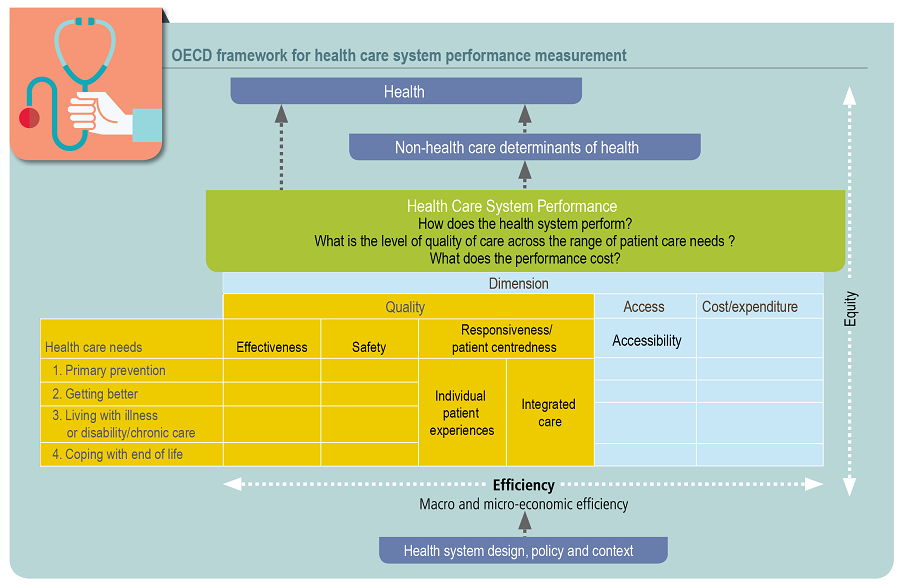

On one hand, Health at a Glance compares the countries based on the difference in each of the indicators with their own conclusions for each block.
#HEALTH SYSTEM INDICATORS COMPARISON EUROPE HOW TO#
The first difference is about how to achieve the comparison between the different countries. This index is composed of 11 different dimensions among which are housing, income and health.Īlthough there are similitudes, the index proposed here has some differences with the one proposed by the OECD.

By making these parameters dynamic variables, the result of the index will depend on the valuation made of each indicator. One of the innovations introduced in this type of publication is found in the OECD Better Life Index (2017) index where a global ranking is made and, unlike our work, the weighting of the indicators is not static but can be modified. For example, the oldest available educational index is from 2004 Education at a Glance (2004) and the most current from 2017 Education at a Glance (2017), so that the results of the policies implemented during those years can be analyzed, which the results have been and that countries have made improvements and which are getting worse. In addition, the OECD monitors the subjects studied, repeating the development of these indices periodically to see if there are developments or trends and analyze their causes. In recent years, they have developed indexes on subjects such as Education at a Glance (2017), good governance Government at a Glance (2017), Entrepreneurship at a Glance (2017), Society at a Glance (2016) and finally Health at a Glance (2017). The Organization for Economic Cooperation and Development (OECD) is one of the international organizations that elaborates indices by compiling numerous indicators to compare among its member countries the status of certain subjects and to determine which policies are more or less successful, according to the results they show. However, most of the studies of this type published up to now, do not usually include this global result once the indicators have been weighted, but simply individually compare the set of indicators. The creation of indexes is a technique used in several studies of public institutions and international organizations.

Section 3 presents the results and finally Section 4 discussion and conclusions. Section 2 presents the data and method used to compose the index. In the remainder of the paper, an introduction for the creation of the index is presented in Section 1. It is an interesting point to analyze the fact of obtaining better or worse results according to each system, thus measuring the efficiency of public expenditure on health in each country. Since health is a national competence, there are several points of divergence between the different countries not addressed by the EU. However, the index we propose in this paper is not limited only to the points that are addressed in the European strategy. 1 With this objective in mind, the European Commission has designed a Health Strategy based on five fundamental points: Prevention, by promoting healthier habits Procure a universal health care Quality of life during old age 2 Coordinate the fight against epidemics 3 Research and improvement of the quality of systems with new technologies. Health is one of the pillars of the welfare state and is the responsibility of each of the countries that make up the union, so the EU's role in health is to complement national policies and promote cooperation.


 0 kommentar(er)
0 kommentar(er)
